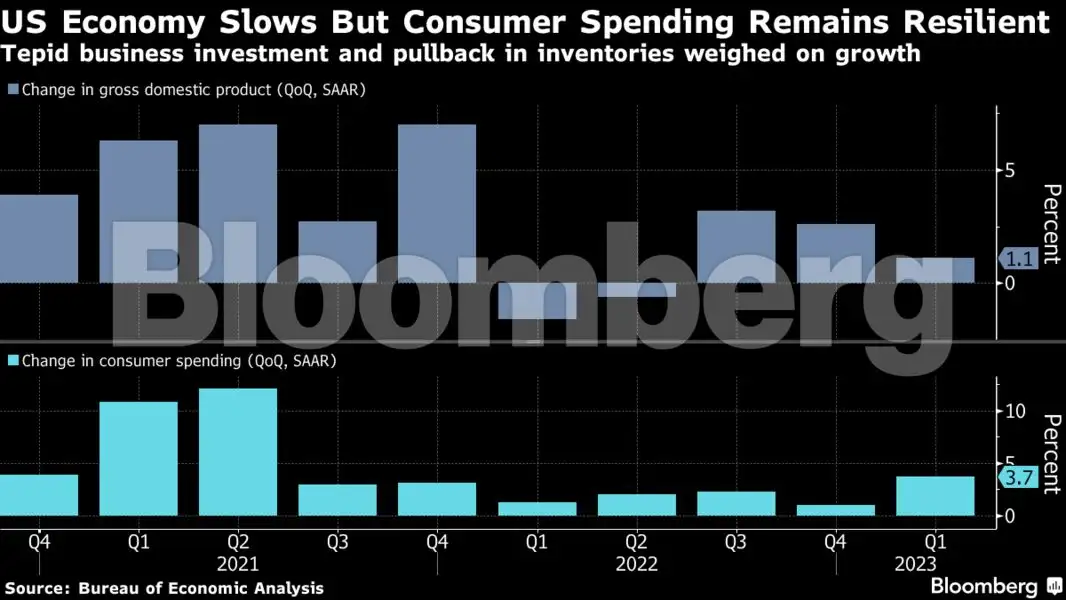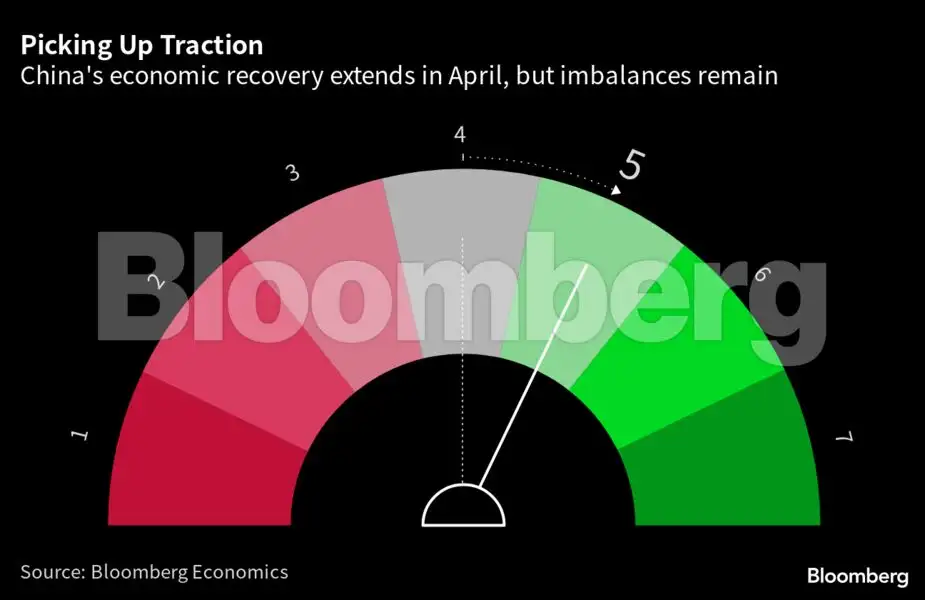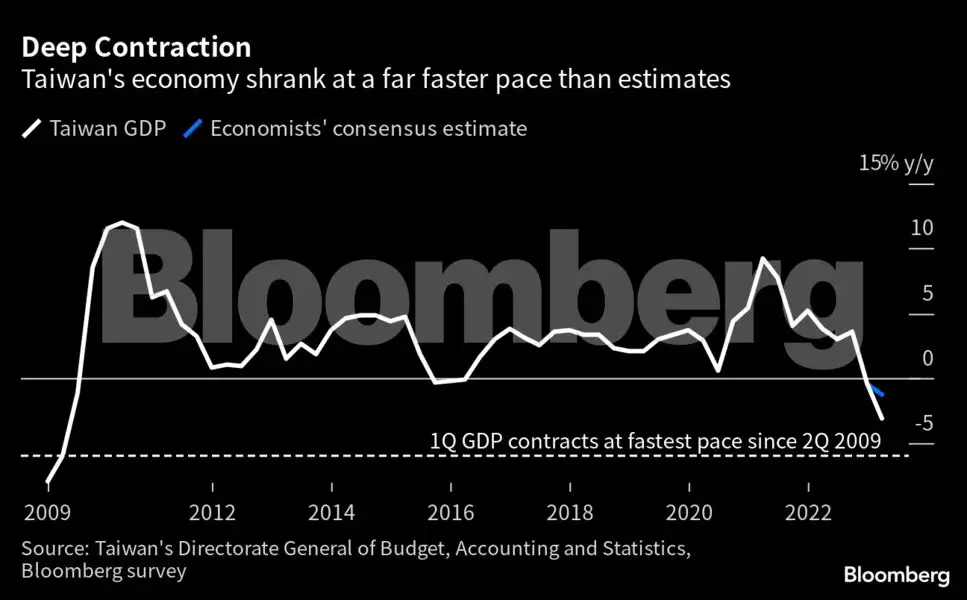The personal consumption expenditures price index excluding food and energy, the Fed’s preferred measure of underlying inflation, rose 0.3% in March from the prior month and 4.6% from a year earlier. Meanwhile, a separate report on employment costs climbed by more than forecast at the start of the year.
Inflation in the US is largely being driven by labor and input costs, according to an analysis by Bloomberg Economics. In Europe, there’s a stronger case to be made that greedy corporations are contributing to price growth.
Here are some of the charts that appeared on Bloomberg this week on the latest developments in the global economy:
US
 Bloomberg
BloombergThe PCE price data, especially in conjunction with rising labor costs, reinforce forecasts that Fed policymakers will raise their benchmark interest rate another quarter percentage point at next week’s meeting. While annual inflation has peaked, the path back to the central bank’s 2% goal is proving bumpy.
 Bloomberg
BloombergEconomic growth slowed in the first quarter by more than expected as tepid business investment and a pullback in inventories tempered a pickup in consumer spending.
Some US policymakers have asserted that price gouging by greedy companies is driving inflation. Bloomberg Economics finds that while profit margins for US firms generally increased during the pandemic, the increase in labor and other input costs contributed significantly more to high inflation.
Europe
 Bloomberg
BloombergSo-called greedflation is threatening to complicate efforts to rein in consumer-price growth, meaning the European Central Bank may have to do more to hit its 2% target — just as officials flag that the end of their most aggressive cycle of interest-rate hikes is approaching.
 Bloomberg
BloombergThe euro zone dodged a winter recession by growing at the start of 2023, despite inflation remaining a menace. The figures will fuel the debate over how big an interest-rate hike the European Central Bank will opt for next.
Asia
 Bloomberg
BloombergChina’s high frequency indicators show the economy continued to expand in April, although the strength of the recovery is under scrutiny amid an uncertain global environment and relatively high unemployment.
 Bloomberg
BloombergTaiwan’s economy plunged into recession after shrinking at the fastest pace since the global financial crisis, a sign of how the dropoff in global demand for chips has showed little sign of abating. The 3.02% fall — the sharpest since the quarter ended June 2009 — was far worse than estimated, underscoring the difficult outlook for the trade-dependent economy as it grapples with wavering global demand for its products.
 iStock
iStockSingapore’s core inflation, a key gauge tracked by the central bank, slowed for the first time since October, in a reprieve for policymakers after they paused monetary tightening to support the economy.
Emerging Markets
 Bloomberg
BloombergBrazil’s annual inflation decelerated in early April to the lowest pace since the pandemic tore through the nation in 2020, intensifying pressure on the central bank to relax monetary policy to stimulate the economy. President Luiz Inacio Lula da Silva has responded to the slowdown by demanding the central bank lower interest rates to prevent Brazil from falling into recession and causing consumers further pain.
 Bloomberg
BloombergAcross eastern Europe, the financial toll of Vladimir Putin’s 14-month-old war on Ukraine is piling up. Energy subsidies are being doled out, armies built up and refugees housed, schooled and fed. To help pay those bills, Ukraine’s neighbors are tapping international debt markets like never before.
 Bloomberg
BloombergAs every major country in Latin America shifts to the left in reaction to widening inequality, capital is flying out of the region. People and corporations in the region’s five largest economies pulled roughly $137 billion out of their countries in 2022. That number — preliminary data from the Institute of International Finance, a group of banking institutions — is 41% higher than the 2021 figure and the most since 2010.
World
 Bloomberg
BloombergThe Bank of Japan scrapped its guidance on future interest rate levels while keeping its main stimulus measures unchanged. Officials in Sweden and Colombia hiked, while those in Russia, Ukraine, Hungary and Turkey held steady. Belarus cut rates.
–With assistance from Stuart Paul (Economist), Anna Wong (Economist), Aaron Eglitis, Samson Ellis, Ezra Fieser, Selcuk Gokoluk, William Horobin, Betty Hou, Andrea Jaramillo, Kamil Kowalcze, John Liu, Reade Pickert, Jana Randow, Andrew Rosati, Augusta Saraiva, Zoe Schneeweiss and Kevin Varley.







